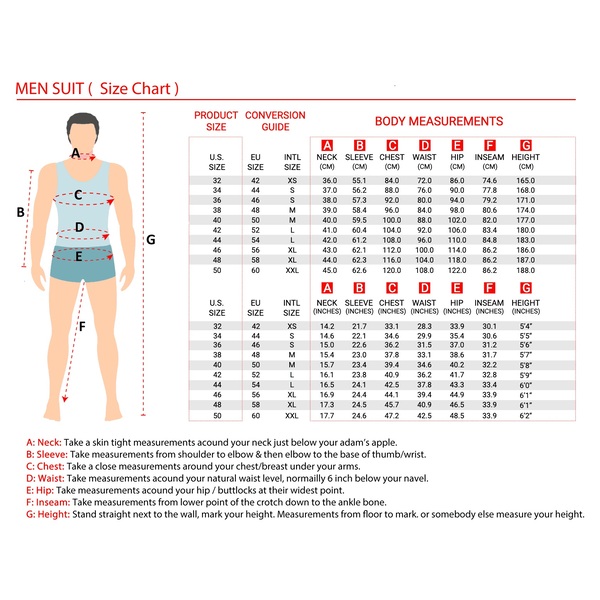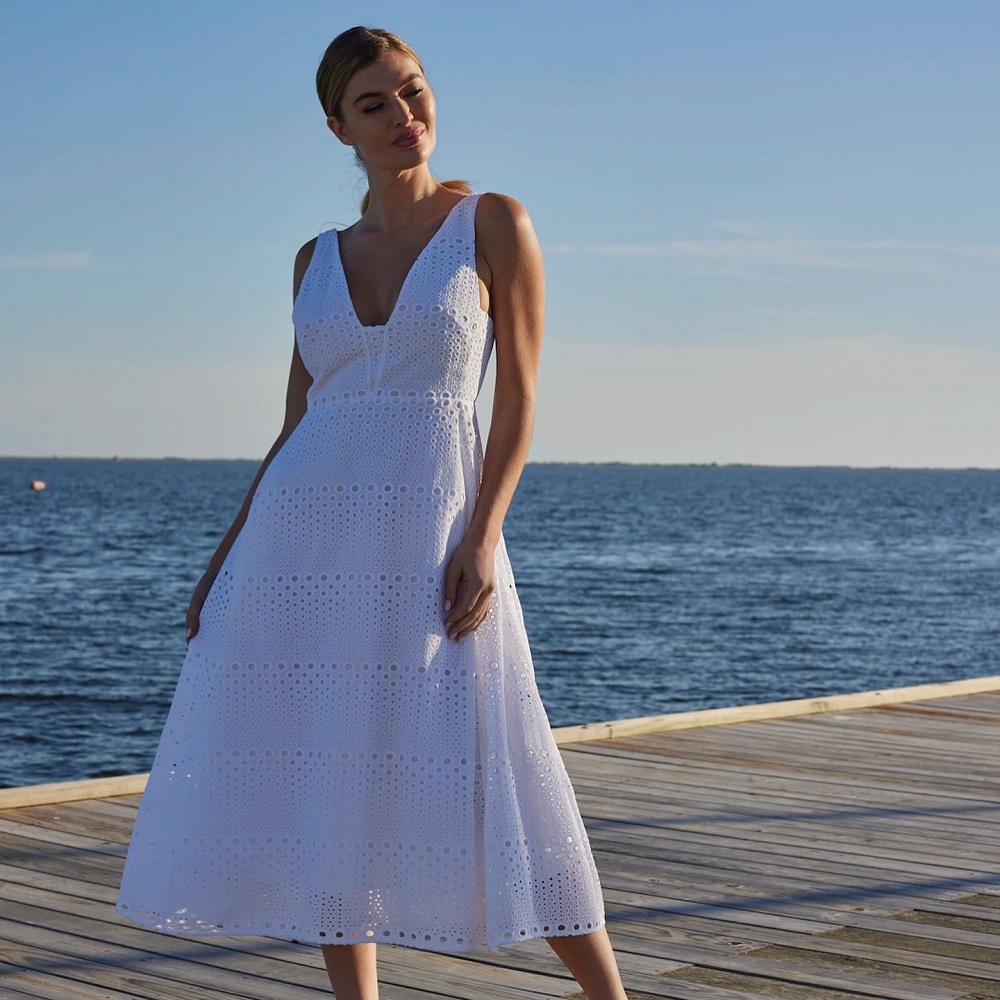Suit Sizing: A Comprehensive Guide for Men’s Formal Attire
Table of Contents
When it comes to dressing up for a formal event, a suit is the go-to choice for many men. However, finding the right size can be a daunting task, especially for those who are not familiar with suit sizing. As someone who has had their fair share of struggles with suit sizing, I understand the importance of getting the right fit.
One of the most important factors to consider when it comes to suit sizing is the jacket length. Jackets usually come in three lengths: Short (S), Regular (R), and Long (L). The length you choose will depend on your height and body type. It’s important to note that the sleeve length may also affect the overall jacket length, so it’s important to take both measurements into account when selecting a jacket.
In addition to the jacket length, it’s also important to consider the chest size. The size label on a suit jacket will typically include a number, which represents the chest size. It’s important to get this measurement right, as a jacket that is too tight or too loose can be uncomfortable and unflattering.
Why Proper Suit Sizing is Important
As someone who has worn many suits in my life, I can tell you firsthand that proper suit sizing is crucial. Not only does it affect your appearance, but it also impacts your comfort and professionalism. In this section, I will discuss why each of these factors is important when it comes to suit sizing.
Appearance
The way your suit fits is the first thing people notice about your appearance. A poorly fitting suit can make you look sloppy and unprofessional. On the other hand, a well-fitted suit can make you look sharp and put-together.
The key to achieving a good fit is to pay attention to the details. Make sure the jacket sits comfortably on your shoulders and doesn’t pull across your chest or back. The sleeves should end at your wrist bone, and the length of the jacket should be long enough to cover your butt but not so long that it looks like a dress.
Comfort
Wearing an ill-fitting suit can be uncomfortable and distracting. If your suit is too tight, you’ll feel constricted and have trouble moving around. If it’s too loose, it will feel like you’re wearing a bag and you’ll constantly be adjusting it. A properly fitting suit should feel comfortable and allow you to move freely without feeling restricted.
Professionalism
Wearing a well-fitted suit is a sign of professionalism. It shows that you take your appearance seriously and that you’re willing to invest time and money into your wardrobe. A poorly fitting suit, on the other hand, can make you look like you don’t care about your appearance or that you’re not detail-oriented. In certain industries, such as law or finance, dressing professionally is essential to your success.
In conclusion, proper suit sizing is important for several reasons. It affects your appearance, comfort, and professionalism. By paying attention to the details and investing in a well-fitted suit, you can look and feel your best in any situation.
How to Measure Yourself for a Suit

Chest Size
To measure your chest size, wrap a tape measure around the fullest part of your chest, under your armpits, and across your shoulder blades. Make sure that the tape measure is level and snug, but not too tight. Take note of the measurement in inches, and round up to the nearest half inch. This will be your chest size.
Waist Size
To measure your waist size, wrap a tape measure around your natural waistline, which is the narrowest part of your waist. This is typically located above your belly button and below your rib cage. Make sure that the tape measure is level and snug, but not too tight. Take note of the measurement in inches, and round up to the nearest half inch. This will be your waist size.
Hip Size
To measure your hip size, wrap a tape measure around the widest part of your hips, which is typically located around your buttocks. Make sure that the tape measure is level and snug, but not too tight. Take note of the measurement in inches, and round up to the nearest half inch. This will be your hip size.
Inseam Length
To measure your inseam length, stand up straight with your feet shoulder-width apart. Measure from the top of your inner thigh down to the bottom of your ankle bone. Make sure that the tape measure is snug, but not too tight. Take note of the measurement in inches, and round up to the nearest half inch. This will be your inseam length.
Shoulder Width
To measure your shoulder width, stand up straight with your arms relaxed at your sides. Measure from the outer edge of one shoulder to the outer edge of the other shoulder. Make sure that the tape measure is level and snug, but not too tight. Take note of the measurement in inches, and round up to the nearest half inch. This will be your shoulder width.
Different Types of Suit Fits
When it comes to suit sizing, there are different types of fits to choose from. Each type of fit has its own unique characteristics and is designed to suit different body types. In this section, I will discuss the four most common types of suit fits – Classic Fit, Slim Fit, Modern Fit, and Athletic Fit.
Classic Fit
The Classic Fit is the most traditional and conservative type of suit fit. It has a relaxed fit with more room in the chest, waist, and hips. This type of fit is ideal for men with a larger build or those who prefer a more comfortable fit. Classic Fit suits are perfect for formal occasions like weddings or business meetings.
Slim Fit
The Slim Fit is a more modern and contemporary type of suit fit. It has a narrower cut with a slimmer silhouette that hugs the body more closely. This type of fit is ideal for men with a leaner build or those who prefer a more fitted look. Slim Fit suits are perfect for fashion-forward events or occasions that require a more stylish look.
Modern Fit
The Modern Fit is a hybrid between the Classic Fit and Slim Fit. It has a more tailored fit with a slimmer cut than the Classic Fit but not as narrow as the Slim Fit. This type of fit is ideal for men who want a more updated look without sacrificing comfort. Modern Fit suits are perfect for both formal and casual events.
Athletic Fit
The Athletic Fit is designed for men with an athletic build. It has a more tapered fit with a narrower waist and wider shoulders. This type of fit is ideal for men who want a more fitted look without feeling constricted. Athletic Fit suits are perfect for men who want to show off their physique while still looking sharp and professional.
Choosing the right type of suit fit is important to ensure that you look and feel your best. Whether you prefer a more traditional or modern look, there is a suit fit that will suit your body type and personal style.
Common Suit Sizing Mistakes to Avoid
Buying a Suit That’s Too Big
One of the most common mistakes when buying a suit is purchasing one that’s too big. Some people mistakenly believe that a larger suit will make them look more professional or hide their flaws. However, a suit that’s too big can actually make you look sloppy and unprofessional. It’s important to choose a suit that fits your body properly and accentuates your best features.
When trying on a suit, make sure the jacket fits snugly around your chest and shoulders without any pulling or puckering. The sleeves should end at your wrist bone, and you should be able to comfortably move your arms. The pants should fit comfortably around your waist and hips without any sagging or bunching.
Buying a Suit That’s Too Small
On the other hand, buying a suit that’s too small can be just as big of a mistake. A suit that’s too tight can restrict your movement and make you feel uncomfortable. It can also create unflattering bulges and wrinkles in the fabric.
When trying on a suit, make sure you can comfortably move your arms and legs without any pulling or stretching. The jacket should button easily without any strain, and the pants should fit comfortably without any tightness or bunching.
Ignoring Your Body Type
Another common mistake when buying a suit is ignoring your body type. Not all suits are created equal, and what looks good on one person may not look good on another. It’s important to choose a suit that flatters your body type and accentuates your best features.
If you have a slim build, a slim-fit suit may be a good option for you. If you have a larger build, a regular or classic fit suit may be more flattering. It’s also important to consider your height when choosing a suit. Taller men may want to opt for a longer jacket and pants, while shorter men may want to choose a shorter jacket and pants.
Not Trying on the Suit Before Buying
One of the biggest mistakes you can make when buying a suit is not trying it on before purchasing it. It’s important to try on a suit to ensure that it fits your body properly and feels comfortable.
When trying on a suit, make sure to move around and sit down to ensure that it’s comfortable and doesn’t restrict your movement. You should also consider the fabric and the weight of the suit. A heavier suit may be more appropriate for colder weather, while a lighter suit may be better for warmer weather.
Conclusion
Overall, finding the right suit size can be a challenge, but it is essential to ensure the perfect fit. As I have discussed in this article, there are several factors to consider when choosing a suit size, including chest size, sleeve length, and jacket length.
It is important to remember that different brands may have slightly different sizing charts, so it is always best to double-check the measurements before making a purchase. Additionally, it is recommended to try on a suit before buying to ensure the perfect fit.
Remember, a well-fitting suit can make all the difference in your appearance and confidence. So take the time to find the right size and invest in a quality suit that will last for years to come.








